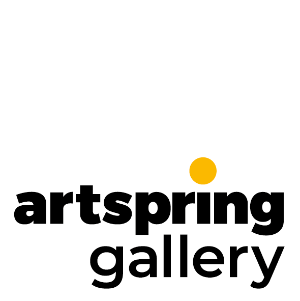Paul Chave’s glass birds and sculptures are easy to like – as the many visitors to the Artspring Gallery who have bought them will agree. His pieces are colourful, modern and original and would add a dash of style to any setting.
But don’t be misled into thinking they are easy for Paul to produce. A lot of design experience, technical knowledge – and not to mention hard graft – goes into making each piece.
That each sculpture is so well designed is perhaps not surprising when you learn about Paul’s working life as a designer and photographer. He worked at the very heart of the London design world in the swinging sixties, producing album covers and marketing campaigns for everyone from The Kinks to The Muppets. “The music business in the sixties was an exciting time,” he says, “I had a lot of fun!” Later he switched to photography, setting up his own studio in Chelsea and winning The Times Photographer of the Year in 1983.
Alongside his career he always followed his own creative interests, including painting and later working with stained and then fused glass when he retired.
But don’t be misled into thinking they are easy for Paul to produce. A lot of design experience, technical knowledge – and not to mention hard graft – goes into making each piece.
That each sculpture is so well designed is perhaps not surprising when you learn about Paul’s working life as a designer and photographer. He worked at the very heart of the London design world in the swinging sixties, producing album covers and marketing campaigns for everyone from The Kinks to The Muppets. “The music business in the sixties was an exciting time,” he says, “I had a lot of fun!” Later he switched to photography, setting up his own studio in Chelsea and winning The Times Photographer of the Year in 1983.
Alongside his career he always followed his own creative interests, including painting and later working with stained and then fused glass when he retired.

So how does he create his quirky glass birds? “I start out by making a sketch,” he says, “and then I have to plan out the stages and mechanics – it’s a bit like putting together a layered glass jigsaw. I cut out a base piece of glass and then I add other layers of coloured glass which fuse together when they go into the kiln. The effects you get will depend on the temperature of the kiln and how long a piece is in there for – but there’s always an element of unpredictability. You do get some happy accidents!”
Many of the pieces are mounted on large stones that Paul has found on beaches around the UK, but that’s the easy bit. He then has to angle grind down each stone so that one side is flat before drilling a vertical hole into the rock using a diamond tipped drill. “Each hole can take up to 45 minutes to drill,” he says, “and I have to lean on the drill with my whole weight.” He then inserts a small brass pole into the hole and the sculpture is stuck to this. Phew!
“Every design is different,” he says, “and when it works it’s a great feeling. “I learn something on practically everything I do. Every job, no matter how small, you build up that knowledge and that is so satisfying.”
Many of the pieces are mounted on large stones that Paul has found on beaches around the UK, but that’s the easy bit. He then has to angle grind down each stone so that one side is flat before drilling a vertical hole into the rock using a diamond tipped drill. “Each hole can take up to 45 minutes to drill,” he says, “and I have to lean on the drill with my whole weight.” He then inserts a small brass pole into the hole and the sculpture is stuck to this. Phew!
“Every design is different,” he says, “and when it works it’s a great feeling. “I learn something on practically everything I do. Every job, no matter how small, you build up that knowledge and that is so satisfying.”


